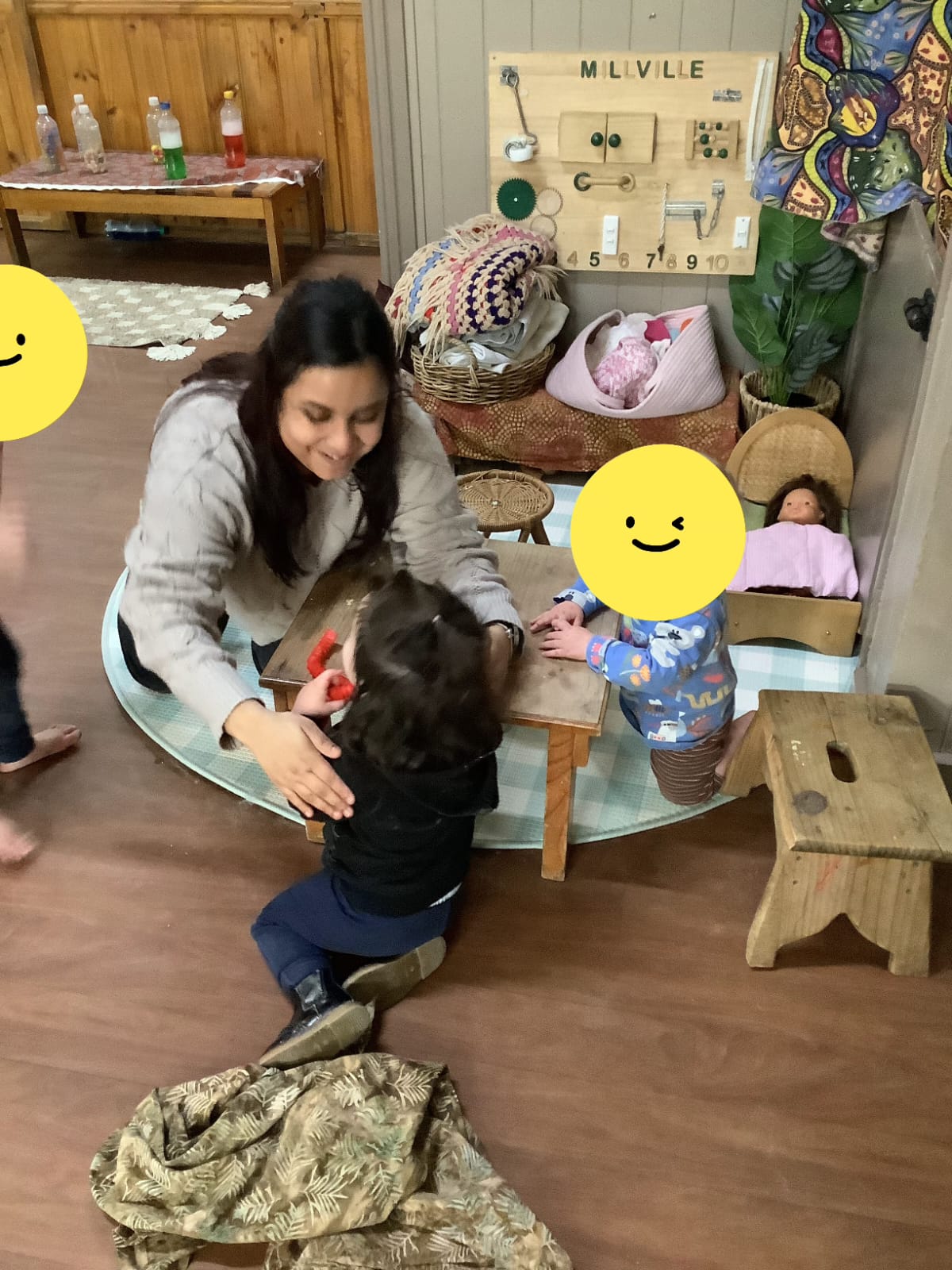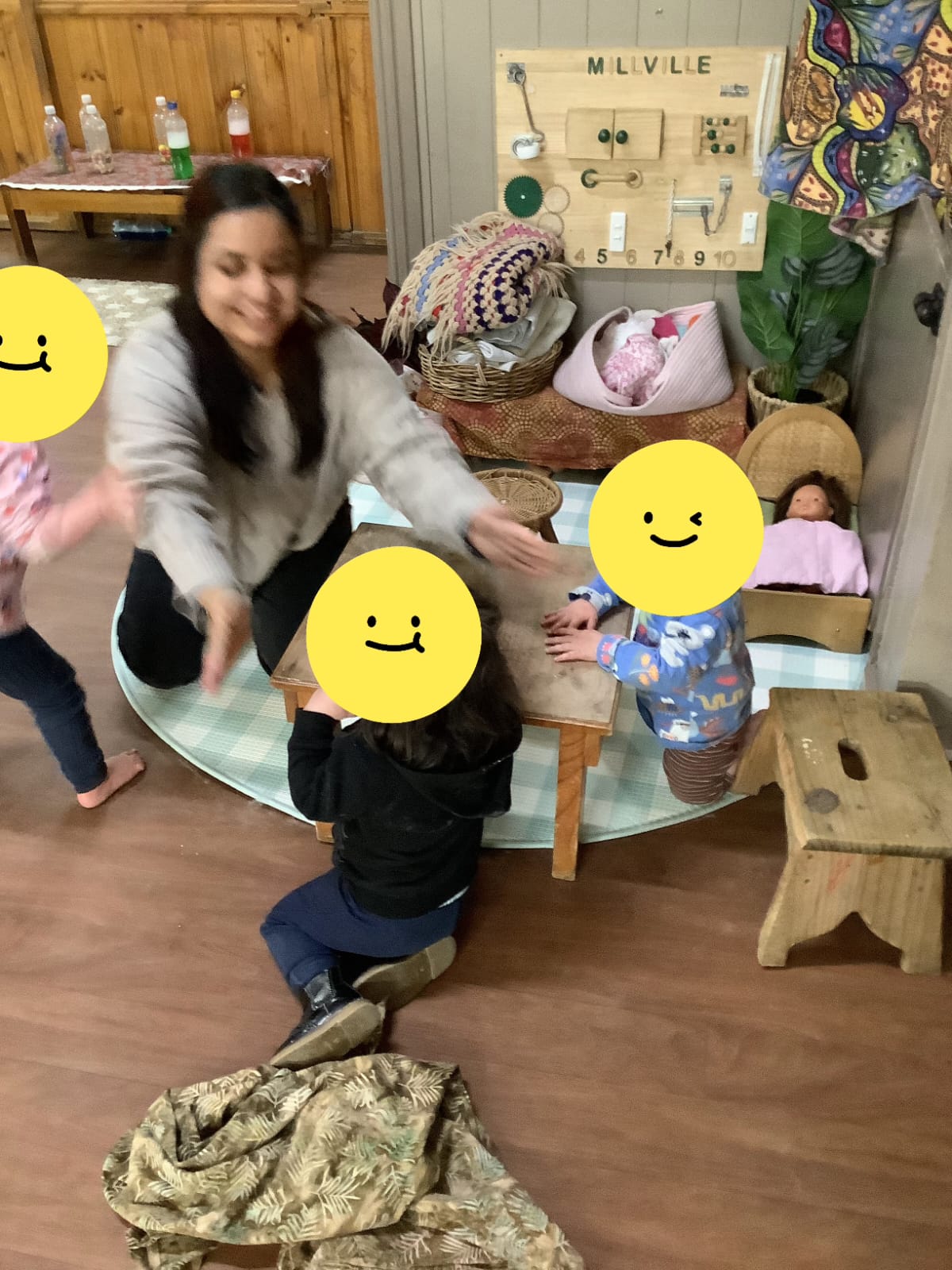Week 1


During my first week at Millville Children’s Centre in the Possum Room, caring for children aged 0-24 months, I observed a lively and warm atmosphere where children played happily alongside their familiar educators. As I introduced myself as Dikshya, I noticed that while the children were curious about my presence, they maintained a small distance, observing me from afar. This behaviour is entirely natural for young children when encountering a new educator.
To bridge this gap and foster a sense of belonging, I initiated a group time where I introduced myself in a friendly and approachable manner. As I engaged the children, I noticed favourite songs posted on the walls, such as “Incy Wincy Spider” and “Sleeping Bunnies.” Singing “See the Little Bunnies Sleeping” captured the children’s attention, and I was delighted to see some of them begin to lay down on the floor, responding to the rhythm and prompts joyfully (Little, 2017). This interaction highlights the significance of music as a powerful tool in early childhood settings, enhancing their emotional connection and engagement. After singing, I further engaged the children by reading a lively picture book, using expressive tones and gestures to bring the story to life. This helped in creating a rich sensory experience that encouraged their imagination and attention. Following Storytime, I introduced puzzle activities. By sitting on the floor with the children and demonstrating how fun the puzzles could be, I noticed that some of them approached me with curiosity, initiating a sense of trust and connection.
Throughout the week, I made a conscious effort to observe the children during play, their sleep times, and daily routines. The routines in the baby room varied significantly, with some children having two naps while most required only one. During sleep time, I observed that some children used cots while others slept on mats on the floor. With 14 babies typically present and five educators plus one lunch cover, the child-to-educator ratio of 1:4 was maintained, meeting regulatory requirements and ensuring adequate supervision and support for each child (Australian Children’s Education & Care Quality Authority, 2022). I observed the dining area, which contained crucial information about children’s allergies, medication plans, and dietary requirements (Vic, n.d.). This is essential for maintaining children’s safety and well-being, particularly in a group setting where individual needs must be respected and catered to (AGDE, 2022).